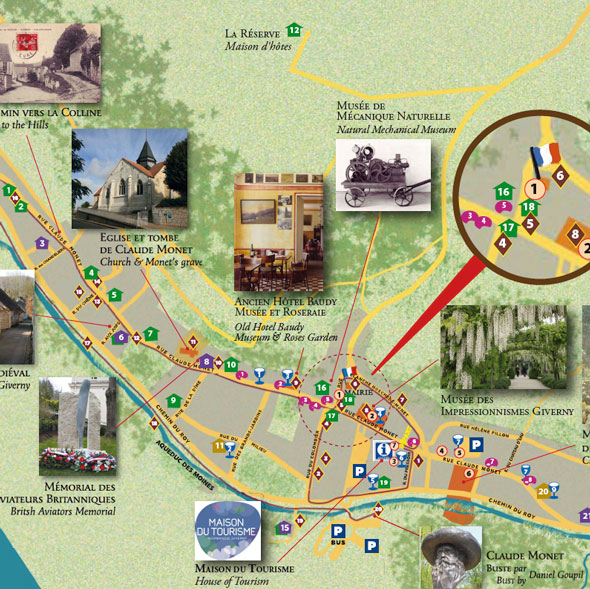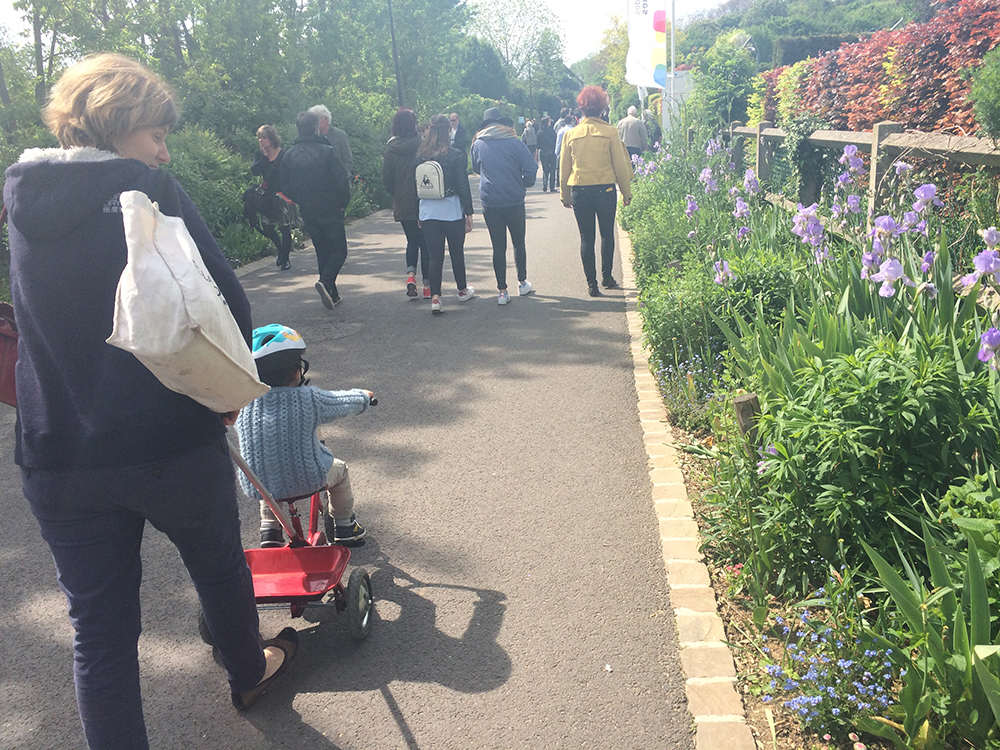Giverny village
Quick presentation of Giverny
Giverny is a small village of 3 mi2 in the countryside of Normandy Region. It is located 50 Miles west of Paris. The city has become very famous by the settlement of Claude Monet, the most famous painter of the Impressionism Movement, at the end of his life.
There is no train going directly to Giverny. The nearest train station to Giverny is Vernon, about 4 miles from Giverny and 46 miles from Paris. Then to get to Giverny from Vernon, you have to take a bus.
Giverny is the second favourite destination of tourists in Normandy. Everyone wants to see the beauty of Monet’s gardens. In order to avoid the crowd, get up early to arrive for the opening of the museum (9:30 am). Or you can also come after 4pm and stay until it closes. An other advice : before going to Giverny, buy your ticket of Monet’s House and Garden online.

Giverny 1 century ago…
In 1883 Claude Monet, who was living in Vétheuil, a little town on the banks of the River Seine, boarded the train Vernon-Gasny line. Looking through the carriage window, Claude Monet spied this little paradise that would become His Giverny. He immediately fell in love with it. He was a famous artist already and he was dreaming of a peaceful place, close to the excitement of Paris, but far enough away to enjoy traditional landscape, way of life and tranquility. Monet and his extended family (his 2 own sons, his second wife Alice Hoschedé and her 6 children) settled in Giverny in 1883. He would spend 40 years in the village, every year travelling less. He died there in 1924.
Claude Monet : for the love of Giverny
“I am in raptures, the countryside of Giverny is glorious for me”
Thanks to an identical renovation of what the house and the gardens used to be, Giverny keeps the memory of Claude Monet alive. At any moment, we could see Monet appear, working on his garden to keep it a true masterpiece. This pastoral paradise is an invitation to contemplation to feel the atmosphere of the master’s place.
We come essentially to Giverny to visit the beautiful gardens. We have two different parts. The Walled Garden (Jardin du Clos Normand), a French- style garden with orderly patterns of plots, lies in front of the pink pebble house with green shutters. Further down, the Water Garden (Jardin d’Eau) with his famous Japanese bridge, its wisterias and pond constitute a background composed of sky and water and brought about Monet’s pictorial water lilies universe. Choose your season according to your favorite nature. From spring to autumn, the gardens provide the changing palette of a gardener artist “mad about flowers”. May – June are the best months for tulips while other trees and flowers (rhododendrons, Japanese azaleas, iris) start to bloom. In autumn, gardens take a yellowish orange hue, Japanese cherry-trees blossom, and petals fall down. Emotion guaranteed for the blooming of water lilies in July! Into the house, you will only see reproductions of Monet’s furniture and paintings illustrating the painter’s daily life. An outstanding collection of Japanese prints (more than 200 pieces!) remains on the walls. Contemplate the dining room bathed in golden sunshine and the kitchen with its blue-and-white ceramic tiles from Rouen. Don’t be surprised at the battery of gleaming copper pans, Monet was an exigent gourmet!
Giverny nowadays
Today, this very well preserved village has become the second most popular tourist attraction in Normandy after the Abbey of Mont Saint-Michel. It attracts more than 800 000 persons a year. We will discover in the main street of Giverny, Rue Claude Monet, several Art Galleries, gift shops and good restaurants. We recommend you the antique shop L’Echoppe and the Galerie Létoliacha. It is also possible to rest for a night or two in a lot of B&B and hotels. Many artists still come to stay in the village in order to experience the light that Monet knew.
Our recommended restaurants : check our page
Map of the center of the village of Giverny.


